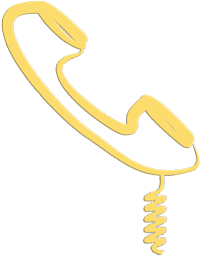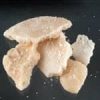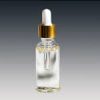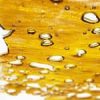Quick Description
Marijuana is a green, brown, or gray mixture of dried, shredded leaves, stems, seeds, and flowers of the hemp plant. It has many street names such as pot, herb, weed, grass, boom, Mary Jane, gangster, or chronic. There are more than 200 slang terms for this drug.
Sinsemilla
Sinsemilla is the female cannabis plant, not a different variety of the plant but cultivated differently. It comes from the Spanish words “sin” (“without”) and “semilla” (“seed”). So, it is a non-pollinated flower that does not contain seeds. A seedless plant has more THC, the active ingredients.
All forms of the drug are mind-altering. They all contain THC (delta-9-tetrahydrocannabinol). They also have more than 400 other chemicals. Pot’s effects on the user depend on its strength or potency.
Cannabis Depressant and Psychedelic Drug
It is often classified as a mild psychedelic drug (similar to LSD and magic mushrooms), but the active ingredients have many depressant effects. Those who consume it can experience muscle relaxation, tiredness, decreased alertness, and sedation, all of which are similar to the effects of depressants.
Very common risks and symptoms associated with its use:
- Depression
- Anxiety
- Panic
- Sensory Distortion
- Poor Coordination
- Suppression of the Immune System
- Reduced Sexual Capacity
- Lack of Motivation
- Personality and Mood Changes.
How Marijuana Affects the Body
Some immediate physical effects of it include:
- bloodshot eyes
- a faster heartbeat and pulse rate
- dry mouth and throat
No scientific evidence indicates that cannabis products improve hearing, eyesight, and skin sensitivity.
The drug increases the heart rate by as much as 50 percent, depending on the amount of THC. It can also cause chest pain in people who have a poor blood supply to the heart – and it produces these effects more rapidly than tobacco smoke does.
Scientists believe that marijuana can be especially harmful to the lungs because users often inhale the unfiltered smoke deeply and hold it in their lungs as long as possible. Therefore, the smoke is in contact with lung tissues for long periods of time, which irritates the lungs and damages the way they work.
Chemicals in Pot & Pot products
Marijuana smoke contains some of the same ingredients in tobacco smoke that can cause emphysema and cancer. In addition, many users also smoke cigarettes; the combined effects of smoking these two substances create an increased health risk.
“Burnout” is a term first used by smokers themselves to describe the impact of prolonged use. Young people who smoke heavily over long periods of time can become dull, slow-moving, and inattentive.
These “burned-out” users are sometimes so unaware of their surroundings that they do not respond when friends speak to them, and they do not realize they have a problem.
How It Affects the Mind
Laboratory studies have shown that animals exhibit symptoms of drug withdrawal after cessation of prolonged administration. Some human studies have also demonstrated withdrawal symptoms such as irritability, stomach pain, aggression, and anxiety after stopping oral administration of tetrahydrocannabinol (THC).
NIDA-supported researchers at McLean Hospital in Belmont, Massachusetts, and Columbia University in New York City have shown that individuals who regularly smoke it experience withdrawal symptoms after they stop smoking the drug.
Studies at Columbia University in New York City have demonstrated that, in addition to aggression, smokers experience other withdrawal symptoms such as anxiety, stomach pain, and increased irritability during abstinence from the drug.
“We repeatedly hear the myth that marijuana is a benign drug—that it is not addictive (which it is) or that it does not pose a threat to the user’s health or brain (which it does).” NIDA
History of Marijuana
Marijuana has been used as an agent for achieving euphoria since ancient times; it was described in a Chinese medical compendium traditionally considered to date from 2737 B.C. Its use spread from China to India and then to N Africa and reached Europe at least as early as A.D. 500.
The first direct reference to a cannabis product as a psychoactive agent dates from 2737 BC, in the writings of the Chinese emperor Shen Nung. The focus was on its powers as a medication for rheumatism, gout, malaria, and oddly enough, absent-mindedness.
Mention was made of the intoxicating properties, but the medicinal value was considered more important. In India, clearly used marijuana for recreational purposes.
The Muslims also used it as a recreational substance because alcohol consumption was banned by the Koran. The Muslims introduced hashish, whose popularity spread quickly throughout 12th century Persia Iran, and North Africa.
Cannabis in America
In 1545 the Spanish brought it to the New World. The English introduced it in Jamestown in 1611, where it became a major commercial crop alongside tobacco and was grown as a source of fibre.
By 1890, cotton replaced hemp as a major cash crop in southern states. Some patent medicines during this era contained some THC, but it was a small percentage compared to the number containing opium or cocaine.
It was in the 1920s that it began to catch on. Some historians say Prohibition brought about its emergence. Its recreational use was restricted to jazz musicians and people in show business. “Reefer songs” became the rage of the jazz world.
Marijuana clubs, called tea pads, sprang up in every major city. The authorities tolerated these establishments because of the drug’s legal status. And patrons showed no evidence of making a nuisance of themselves or disturbing the community. At the time, it wasn’t a social threat.
Signs of Marijuana Abuse
Some noticeable signs of abuse include:
- Sleepy or slow to react in the later stages.
- Lack of concentration and coordination.
- Forgetfulness in conversation.
- Inflammation in whites of eyes.
- Distorted sense of time passage – tendency to overestimate time intervals.
- Craving for sweets.
- Increased appetite.
- Use or possession of paraphernalia, including roach clips, packs of rolling papers, pipes, or bongs.
Since its legalization in Canada, addiction is more prominent.
Medical Standpoint
Prescribed in 1850
Marijuana was listed in the United States Pharmacopeia from 1850 until 1942 and prescribed for various conditions, including labour pains, nausea, and rheumatism. Its use as an intoxicant was also commonplace from the 1850s to the 1930s.
A campaign conducted in the 1930s by the U.S. Federal Bureau of Narcotics (now the Bureau of Narcotics and Dangerous Drugs.) Seeking to portray marijuana as a powerful, addicting substance that would lead users into narcotics addiction. It is still considered a “gateway” drug by some authorities.
In the 1950s, it was an accessory of the beat generation.
In the 1960s, it was used by college students and “hippies”; and became a symbol of rebellion against authority.
Controlled Substance Act of 1970
The Controlled Substances Act of 1970 classified this drug with heroin and LSD as a Schedule I drug.
It was considered to have a relatively highest abuse potential and no accepted medical use. Most of the pot at that time came from Mexico, but in 1975 the Mexican government agreed to eradicate the crop by spraying it with the herbicide paraquat, raising fears of toxic side effects.
Colombia then became the main supplier. The “zero-tolerance” climate of the Reagan and Bush administrations resulted in the passage of strict laws and mandatory sentences for possession of the substance. The authorities also enforced a heightened vigilance against smuggling at the southern borders.
The “war on drugs” thus brought with it a shift from reliance on imported supplies to domestic cultivation (particularly in Hawaii and California). In 1982, the Drug Enforcement Administration focused on cannabis farms in the United States.
This creates a shift to indoor growing plants specially developed for small size and high yield. After more than a decade of decreasing use, marijuana smoking began an upward trend once more in the early 1990s, especially among teenagers.
October 17th, 2018 & Cannabis in Canada
Canada legalized the drug. Adults 18 years of age or older can legally possess up to 30 grams of legal cannabis, dried or equivalent in public. They can share up to 30 grams with other adults, grow up to 4 plants per residence for personal use, and make products at home, such as food and drinks.
Related readings:
List of Drugs
REVIEWS

Marc J. Bernard
Author,
Substance Use Disorder & Recovery Professional,
Referral & Consultation Counsellor



















